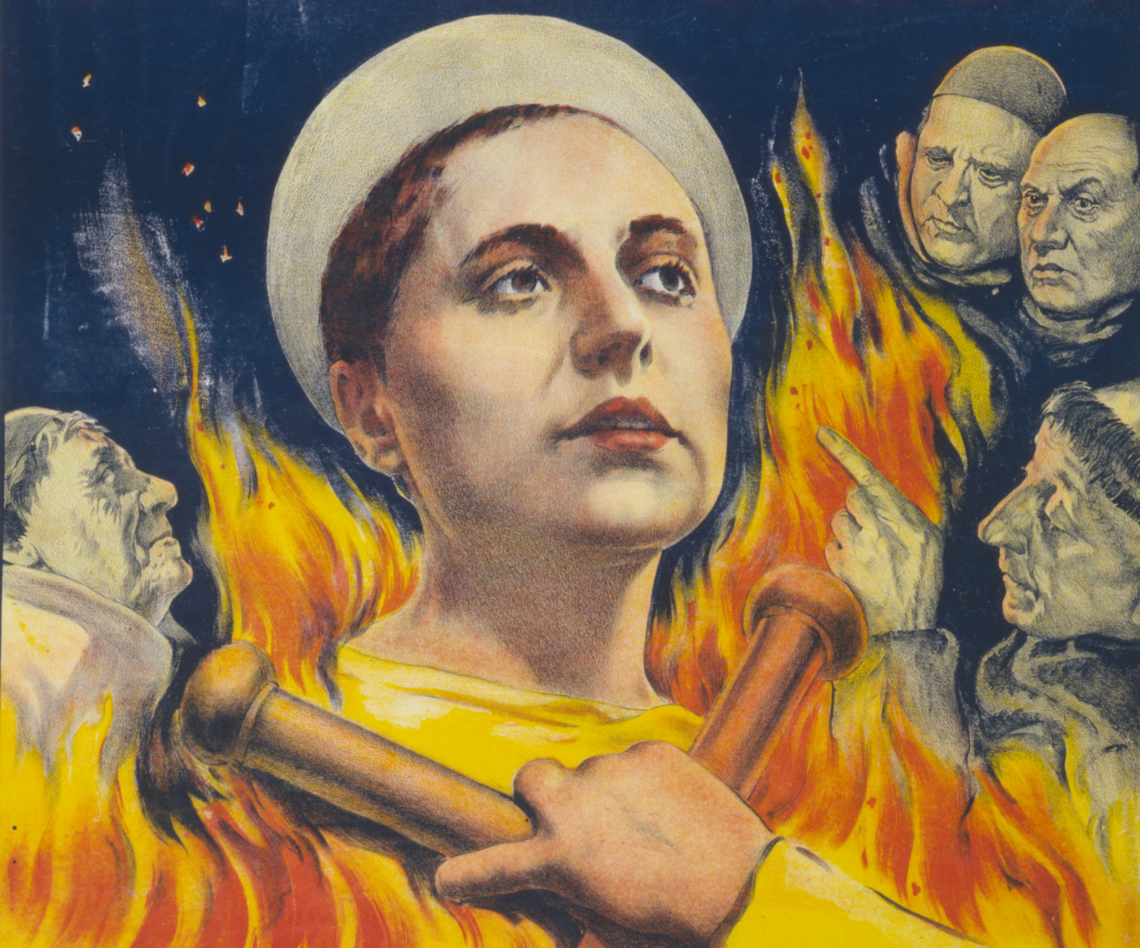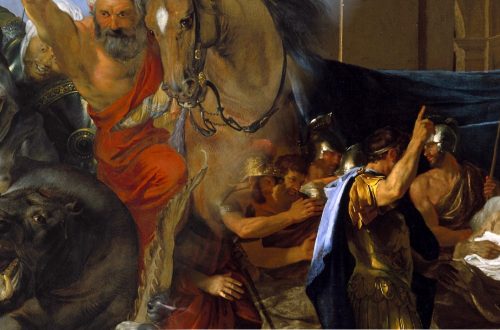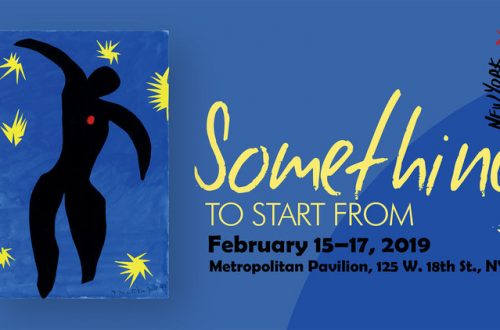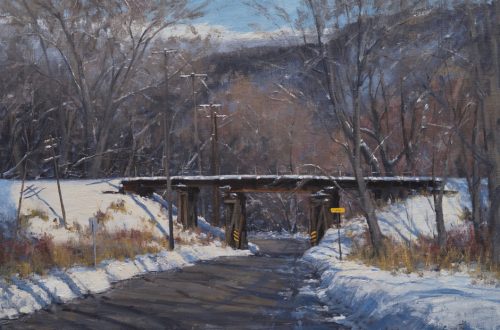by Brad Lindberg and Abbey von Gohren
Nothing in the world can be compared to the human face. It is a land one can never tire of exploring. There is no greater experience in a studio than to witness the expression of a sensitive face under the mysterious power of inspiration. To see it animated from inside, and turning into poetry.
Carl Th. Dreyer, “Thoughts on My Craft”
Though he only made about a dozen pictures over a long span of time (1919-1960s), Danish filmmaker Carl Theodor Dreyer’s influence permeates the development of film as an art medium. Many great masters of cinema point to Dreyer as indispensable in conceiving of their own approaches and works. As film critic Armond White points out:
Before Lars von Trier, Krzysztof Kieslowski, Andrei Tarkovsky, Ingmar Bergman, Robert Bresson there was Carl Th. Dreyer. The first great film artist to pursue the ineffable in cinema, Dreyer gave depth to what early silent filmmakers innately understood yet took for granted: that cinema’s ability to record reality also provided a view that transcended everyday reality. The tradition of filmmakers concerned with the cosmic and spiritual dimensions of life can be traced back to Dreyer: Kieslowski’s various explorations of time and morality; Tarkovsky’s use of the film medium to create visions of great immanence; Bergman’s intrigue with the female psyche and the question of God; Bresson’s diverse speculations on the modern soul (including Bresson’s own Joan of Arc film). These directors followed Dreyer’s singular path towards the transcendent by staying closely rooted to the earth.
Of his twelve total works, only five are considered major works. Before he made his first picture, his beginnings were rather humble – cutting film on the one hand, and shooting government documentaries on the other. As an editor at Nordisk Films, a Danish film institute, he learned the craft by cutting film. His other occupation was as a journalist, so he shot a couple of short government films throughout his career. (As a humorous aside, one of these shorts is called “They Caught the Ferry” (1948), which means the same thing as “they bought the farm” in Danish. In this film, a couple zooms along on a motorcycle, literally trying to get to the ferry on time. The cameraman he was working with suggested they speed up the film to simulate the speed of the ride, but Dreyer refused, insisting on riding along with them at 70 miles an hour. Ironically, the film crew got into an accident themselves by hitting a tree.)
Two of Dreyer’s masterpieces were filmed at two very different points in his life and career (The Passion of Joan of Arc, 1928 and Ordet, 1952), and so provide different glimpses into his engagement with the divine and also the Church. They are also really excellent representations of his different approaches to the human face and psychology. Watching these two films side-by-side provides a unique perspective and offers a great introduction to his work for those who are yet unfamiliar with him.
The Passion of Joan of Arc is a silent film, and the original score has been lost. The film itself was not well known after its production, and it disappeared for a while. Strangely, a negative of it was later found in a Norwegian insane asylum, which is how it came back into general circulation. People have created various scores for it, such as the recent “Voices of Light” (1994) by Richard Einhorn. It is a wonderful experience, in fact, to watch the film in complete silence, because the rhythms of the film have a way of making the viewer forget about the lack of a soundtrack. The movie dialogue is based on the testimonial records of her trial, so the first half consists of the trial proceedings against Joan. The second half consists of her imprisonment, her captors’ threats of torture against her, and her eventual burning at the stake.
There are a number of factors which are distinctive about The Passion of Joan of Arc, and Dreyer’s style in particular, as it compares to other silent films of the period. First, no one is wearing makeup, which is striking, or even exceptional for that era of film. Second, there are quite extreme close-ups of faces. The intensity of Joan’s emotion and expression of her spiritual state on her face are unsettling, especially in contrast to tableau shots. Even from the beginning, Dreyer sets the heightened tone with a moving shot along the row of faces assembled in the court for the trial. The perspective cuts between closeups of her face and the judges’ faces, scanning the row. In his own writings, Dreyer explained how he used this level of proximity with the camera to express the inner or psychological states of his protagonists. Rather than just having a medium shot with one or two people on screen, the viewer is confronted with only one face showing all the intensity of the character’s interior state.
Dreyer also uses unusual shot angles, positioning the camera in unexpected and jarring ways. For example, in a sequence when Joan is being shown the instruments of torture, her captors start turning one device which includes a large wheel, and it starts slowly, then the shot cuts to her, then to the other faces in the room, and then back to the wheel, a cycle of cuts that gets faster and faster. This is at the least very striking, if not innovative. Dreyer once said that film is first and foremost a visual medium, and Joan demonstrates just how much can be expressed in a totally silent film. Even the sparse dialogue (most of it is directly taken from the historical record) supports this intensely visual experience.
The second film, Ordet, is a dramatic contrast to Joan in many ways. The main character, Borgen, is the patriarch of an influential family in the local Lutheran community. He has three sons. The eldest, Mikkel, is agnostic and married to the devout Inger who also happens to be pregnant. The middle son, Johannes, has gone insane from reading too much Kierkegaard. The opening scene includes an open field, vaguely reminiscent of Christ’s Sermon on the Mount, where Johannes is preaching “woe to the hypocrites” and claiming that he is himself the resurrected Christ. The youngest son, Anders, wants to marry the daughter of Peter the tailor, who belongs to a more fundamentalist sect than they do. Major contentions arise over the course of the story between the two fathers, both doctrinally and personally. The film brings up questions of faith, miracles, and what is real.
Much of Ordet consists of long, sustained shots, creating a much slower pace than a viewer may experience with Joan. This contemplative rhythm takes some getting used to, but it actually gives time for characters to develop. In Ordet, Dreyer still occasionally uses close-ups of faces, but it is not nearly as extreme and unsettling. In this way, Ordet is more of a meditation on the outworkings of faith in community, while The Passion of Joan of Arc focuses on the individual states of Joan and her persecutors.
For viewers who are not as familiar with silent film or Carl Th. Dreyer, there are a few suggestions to keep in mind. First, the pace of film is going to be very different from most 21st century filmmaking. The use of intertitles (the text that appears as a shot in-between visual shots) feels sometimes like an interruption, but is fairly easy to incorporate with habitual watching, much like getting used to subtitles in foreign films. Next, it can be helpful to attune your aesthetic sensibilities by having a look at the work of film pioneers, especially that of the Lumière brothers from the turn of the 19th century. They use many tableau shots, which make the theater origins of film really obvious, since all of the characters are on a kind of stage. Finally, it is important to keep in mind that the style of storytelling is going to be different. It’s going to be very visual, some of it is melodramatic, and much of early silent film seems rather heavy-handed one hundred years later. Most of these films are not a heavy intellectual lift, but the viewer must be willing to submit herself to it and keep her mind open to something different.
Interested in learning more about early film? The Passion of the Joan of Arc and Ordet of Carl Th. Dreyer provide an excellent side-by-side introduction to, but for more wonderful film artists from this era, you will want to explore directors like Buster Keaton, Charlie Chaplin, Harold Lloyd, F.W. Murnau, Fritz Lang and Robert Wiene. Many early films of these are available online.
- Robert Wiene, The Cabinet of Dr. Caligari (1920)
- Charlie Chaplin, The Kid (1921)
- F.W. Murnau, Nosferatu (1922)
- Harold Lloyd Safety Last! (1923)
- Buster Keaton, Go West! (1925)
- Fritz Lang, Metropolis (1927)
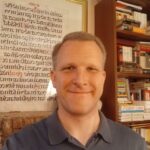
Brad Lindberg has been a faculty member at Trinity School at River Ridge for 12 years, mostly teaching Latin and German. In his spare time he enjoys reading, playing volleyball and hanging out with his wife and six children.

Abbey von Gohren lives in Minneapolis with her family. She spends her days mostly running around barefoot after her small sons, foraging for wild food, planning her next trip to Paris, and writing when she has time.
Header Image: Unknown. Publisher: New York: Eloquent Press, N. Morgillo, Public domain, via Wikimedia Commons
